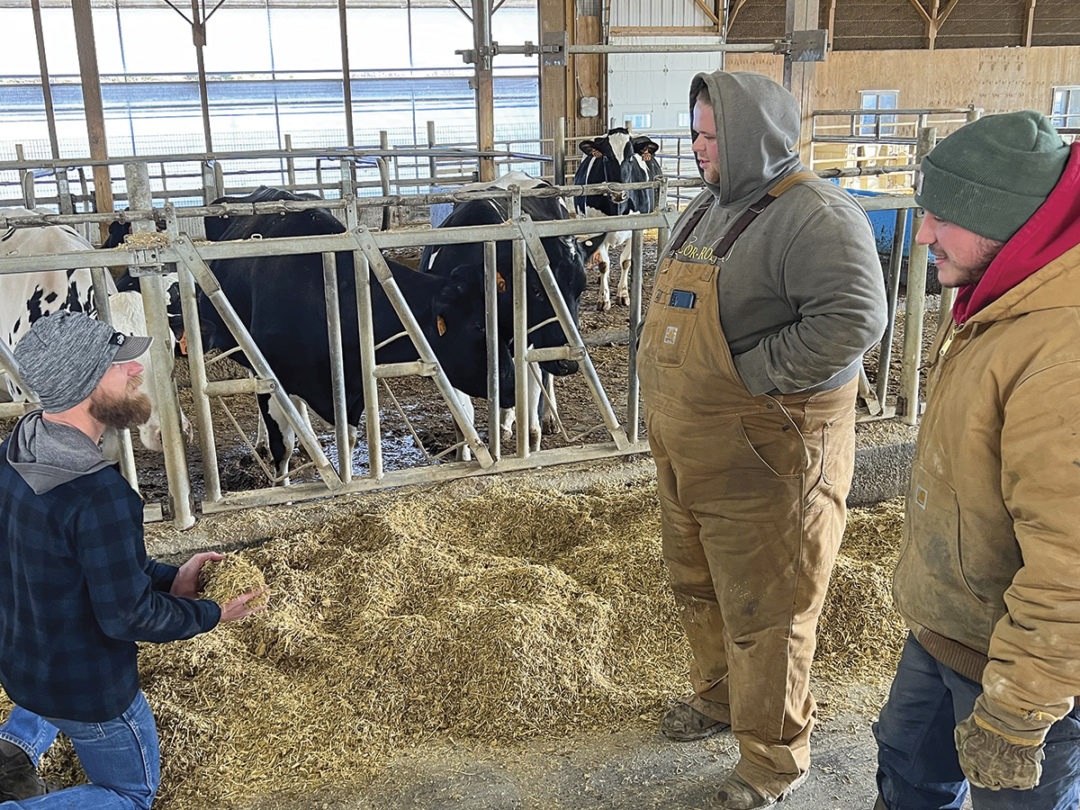My work with farms across the state of New York during the past 11 years has allowed me to witness a lot of employees come and go, and sometimes show up on a farm a few counties over. Managers grumble when they have a rotating door of employees, disliking the hassle and the expense of onboarding and training. Estimates from the Society for Human Resource Management put the cost of replacing an employee at 90% to 200% of the yearly salary for each individual position. This includes lost productivity of the employee who has decided to leave, employee time covering a vacant position (extra shifts, overtime), manager time recruiting and training a new employee, plus the inefficiencies and mistakes of the new employee.
Sometimes employees leave for a promise of more hours or higher pay. Other times, they’re pulled away by an opportunity to live and work with family, or to take on a role that better suits their interests and abilities. But often, employees leave simply because they are unhappy. They may feel undervalued, voiceless in the workplace or poorly treated by their employer.
Their reasons for looking elsewhere are indicative of the culture of the workplace or, simply put, “the way we do things.” Culture includes the norms for behavior in the workplace. On some farms, managers put a lot of effort into creating a positive workplace culture. But even if you’ve never thought about culture, your farm has a culture, and it is impacting your employee retention.
We know a negative workplace culture can drive employees away; alternatively, a positive culture can foster an atmosphere that encourages long-term employees. By focusing on clarity, organization and belonging, you too can create an environment where employees thrive and stick around.
The building blocks for a positive farm culture
Clarity
An employee’s perception of your farm’s culture begins to form before he or she becomes your employee. The potential employee starts to get a feel for the workplace with his or her first contact with your business, be it chatting with a friend who works there, discussing the job over the phone or setting foot in the driveway for the first time to complete employment paperwork.
During those initial conversations, provide as much clarity as you can about both the job and your expectations for performance and workplace behavior. What tasks and responsibilities does the job entail? How many hours a week? What pay and benefits do you offer? If you aren’t explicit about your expectations, employees will come to their own conclusions. Too often, I’ve seen an employee leave a job early on because the role turned out to be different from their expectations.
As time passes, continue to clearly communicate responsibilities and expectations, and provide ongoing feedback so your employees know how they are doing. Make feedback timely and targeted, both positive and constructive. Share specific goals whenever possible, teach how the employee can help achieve the goals, and give regular updates on progress.
Organization
Farming can be a physically difficult job, but that doesn’t mean you or your employees should have to suffer. Create a comfortable, organized physical environment that takes into consideration human needs as well as animal needs. Provide a bathroom and breakroom in good repair and assign the task of cleaning these areas just like you would any other job. If “everyone” is supposed to clean the bathroom, you can be sure no one will.
Create a system that supplies employees with the tools and equipment they need, and keep it in good repair. If the way we do things is to limp through the workday with poorly maintained equipment that makes the job inefficient or difficult, how long can we expect people to stay around?
Another aspect of the workplace that needs organization is scheduling. Employees need to know what days they work and what time they are expected to punch in for their shift. Schedule adequate breaks and comply with state wage and hour laws. Have a clear policy for requesting sick or vacation time and encourage employees to use it.
Dairy farming is a demanding job, but you can build loyalty understanding that your employees have lives outside of the farm; your flexibility whenever possible to accommodate their needs speaks volumes.
A sense of belonging
Supervisors who continually focus on finding the right spot for everyone are more likely to have a positive workplace culture. While there’s no way to know where each person will thrive initially, fostering daily communication with all employees helps supervisors to get to know them and help them find their niche on the dairy.
Cultivate a feeling of physical safety and job security. Do your workers know who to go to with questions or problems? Do they know that their safety is a priority and have the resources they need to do their job safely? Do they trust that they will go home from work unharmed and in one piece, and that their job will be there tomorrow?
Make sure your farm’s pay and benefits are competitive. Fair compensation says a lot about how much you value your employees. It doesn’t tell the whole story, but it’s an important piece of the puzzle.
Enhance a shared sense of purpose and teamwork by celebrating all you accomplish together throughout the year. It can be as formal as a post-harvest celebration or as simple as a surprise delivery of coffee and donuts on a cold winter day.
If all this talk about culture leaves you feeling overwhelmed, take a step back and pick just one aspect of your farm culture to improve. Start with one small thing you can control, whether it be clarity, organization or belonging. Chances are, one change will lead to another – and before you know it, “the way we do things around here” will be changing for the better.







